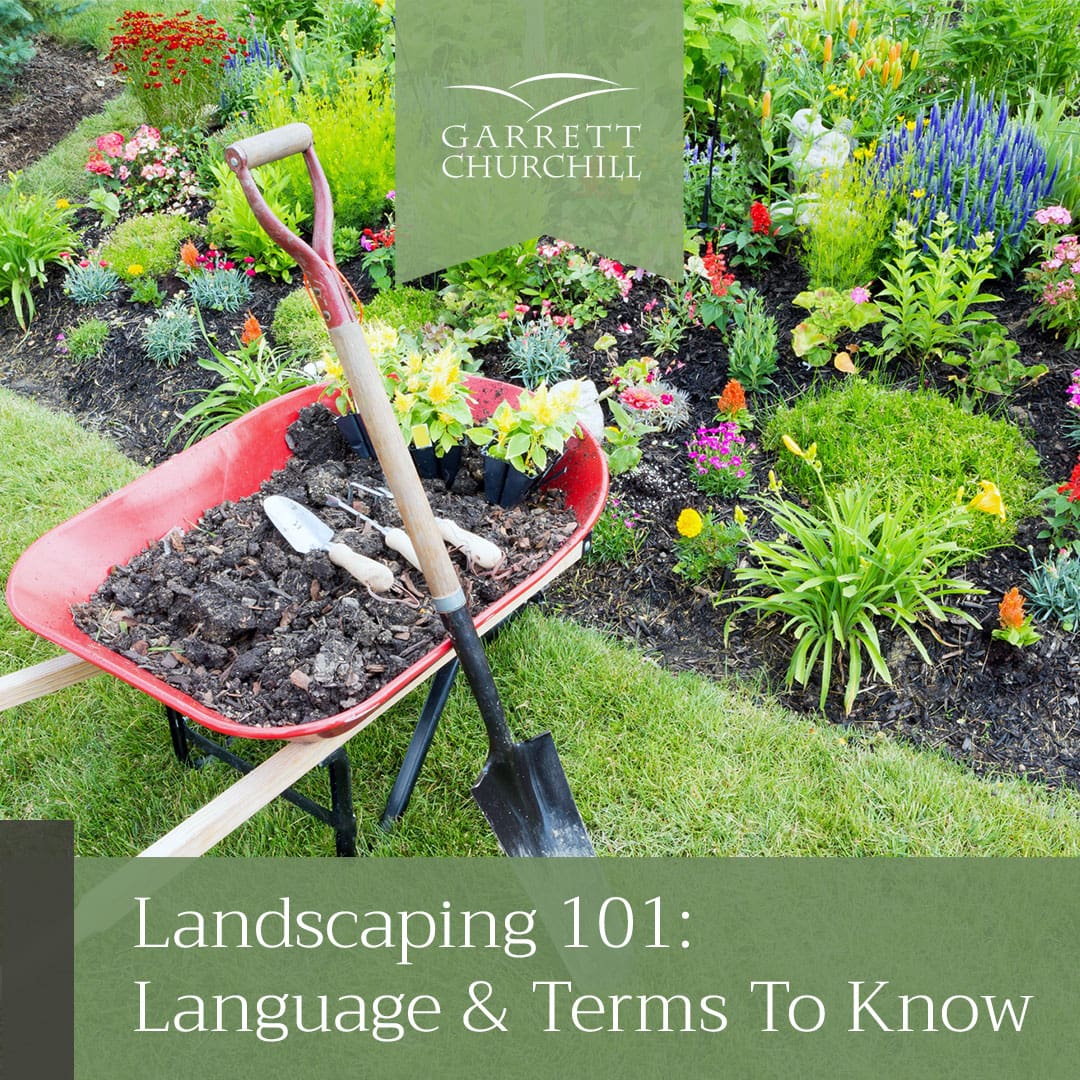Landscaping 101: Language & Terms to Know
When you’re working with a landscape designer or architect, you may encounter language you’re not familiar with. Understanding the basics can help your landscaping project go more smoothly. To familiarize yourself with this language or refresh your memory, take a look at these common landscaping terms:
Accent Plants
Accent plants are plants that stand out from the rest due to their color and texture. They are primarily used for aesthetic purposes. Examples include abelia, gardenia, and coneflower.
Aeration
Aeration is the process of manipulating the soil so oxygen can enter. This is usually accomplished by way of an aerator. If your lawn is having difficulty absorbing water, it probably needs to be aerated.
Aggregate
Aggregate is a section of stone that is used as a decorative surface or footing. Two of the most common types of aggregate are gravel and pea gravel, though it can vary depending on the region.
Annuals
An annual is a plant that flowers and dies in a single season. Examples include begonias, marigolds and zennias.
Arbor
An arbor is a structure designed for vines and climbing plants. They can be found in a variety of designs, including as free-standing structures or as part of a fence.
Arborist
An arborist is a person who specializes in the care of trees. Think of them as a real-life Lorax!
Backfill
Backfill is dirt or gravel that is used to fill the space behind various landscape features and retaining walls.
Balance
Balance is a landscaping concept where all plants in a particular area are arranged in harmony with one another. This involves considering elements such as plant color and texture.
Basin
A basin is an enclosed space that contains water. In landscaping, the basin can be the receptacle receiving water or the area the water spills from.
Cascade
A cascade is a point where water achieves a vertical drop. Its height and width can be changed in accordance with the surrounding landscape.
Catch Basin
A catch basin captures rainwater and redirects it to a well or drain line.
Clump
Clumps are groups of trees, shrubs, or other plants that have been planted together to achieve a tightly grouped look.
Curbing
Curbing is a border or edging created from concrete or stone.
Deciduous
Deciduous trees and shrubs lose their leaves in the winter. Examples include oak, maple, and elm trees. If energy efficiency is your goal, deciduous plants are a great way to landscape for shade.
Dioecious
Dioecious trees and plants are either male or female. As such, they must be cross-pollinated with a plant of the opposite sex in order to yield flowers or fruit.
Dethatch
Thatch is dead grass that has accumulated below the visible green grass. Dethatching is the process of thinning or removing thatch.
Espalier
Espalier can be a vine, tree, or shrub that has been oriented to grow along a wall or fence. They are often used in landscaping with fruit trees.
Evergreen
An evergreen is a tree or plant that maintains green leaves throughout the year.
Fescue
Fescue is a form of turf grass that is spread by rhizomes.
Float Valve
Float valves automatically refill water features after they reach a certain threshold. They can be found in a variety of landscape orientations and are usually connected directly to irrigation systems.
Grading
Grading occurs when the level of soil is changed for aesthetic purposes or to fortify drainage.
Groundcover
Groundcovers are low plants that are allowed to spread throughout a particular area.
Herbaceous
Herbaceous plants are plants that do not have a woody stem.
Minimalism
Minimalism is a landscape design choice in which a small, concentrated number of plants and other elements are used for a design. Minimalism is intimately connected with the concept of modernism in landscaping designs.
Modernism
Modernism pertains to modern landscape design. Essentially, modern landscape design consists of clearly defined borders, intentionally clean lines, and a healthy dose of minimalism.
Ornamental Grasses
Ornamental grasses are grown within a landscape as a perennial. Since they die back in the winter, they do not need to be mowed.
Perennials
Perennials are plants that live for more than two years. They typically die back or go dormant in the winter and return in the spring.
Tsukubai
A tsukubai is a water feature inspired by Japanese handwashing stations.
Variegation
Variegations are patterns of leaves with yellow or white markings.
Xeriscaping
Xeriscaping is a form of landscaping that uses little to no water.
Get Your Landscaping Right the First Time
If you have big plans for your landscape this season, our team is ready to help you bring your vision to life. From landscape design and patios to drainage and lighting system repairs, our team has you covered. Contact us today to get started on your next project.
